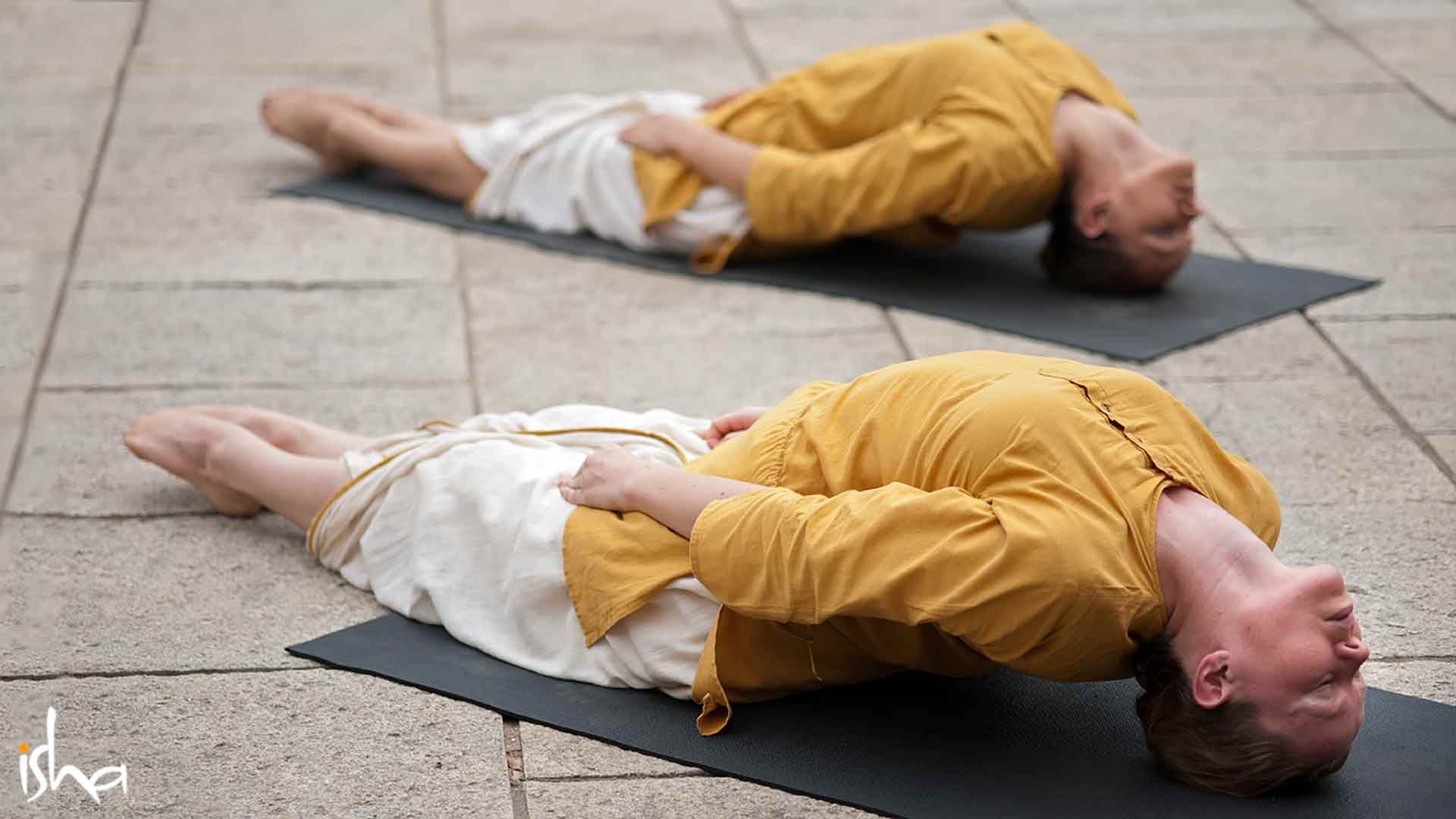Sadhguru on Hatha Yoga and Spinal Health
Sadhguru speaks about the significance of certain Hatha Yoga postures for spinal health.

Questioner: Namaskaram, Sadhguru. What is the significance of the spinal twisting postures that we do after the sarvangasana series?
Sadhguru: If you see the body as two halves split horizontally in the middle, the lower part weighs much more than the upper part. The largest muscles and biggest bones are in the lower body. And the spine is designed to support a certain amount of weight. Even a slight overload of the spine will create problems, because it is a subtle thing, made of 33 pieces of bone.Subscribe
You could compare the spine to the suspension of a car. If you have seen certain luxury cars in India, they will be in the garage half the time simply because they have multi-link suspensions, while our roads are made for one-link suspensions. If you go a little fast and hit a road hump, multi-link suspensions may go out of alignment, and you go straight to the garage. They are not made for such a level of stress. You can still drive, but it will drag. The idea of a multi-link suspension is enhanced maneuverability. Similarly, your spine is a 33-link suspension.
When you do any kind of upside-down posture, there is an exceptionally high amount of weight on the spine. Because of that, after doing any inverted asana, you have to take the time to flex the spine back to its natural state. Therefore, after sarvangasana and halasana, you do ardhamatsyasana, which means bending backwards, in the opposite direction.
Why do these postures in the first place? It is very important that the spine is exercised. Otherwise it will become rigid and useless. If you do not exercise it, your ability to experience life decreases dramatically.
Not everyone experiences life with the same level of sensitivity. Going back to the car analogy, not every suspension experiences the road with the same sensitivity. The sensitivity of your suspension determines the maneuverability. If it is super-sensitive, it maneuvers well, but one pothole, and it gets misaligned. So it is important to keep the spine sensitive, flexible, well-aligned, and mobile. All the yoga you do is in some way aimed towards that.
So, after sarvangasana, which reverses the load upon the spine, it is extremely important that you stretch the spine back to its normal self. I call it a “self,” because without the spine, you would not experience most of the things that you experience as a human being. It is designed to do things you would not imagine possible. Keeping the spine well-protected, strong, and sensitive is important for a yogi because you want to experience the whole universe as a part of yourself.
Editor’s Note: Isha Hatha Yoga programs are an extensive exploration of classical hatha yoga, which revive various dimensions of this ancient science that are largely absent in the world today. These programs offer an unparalleled opportunity to explore Upa-yoga, Angamardana, Surya Kriya, Surya Shakti, Yogasanas and Bhuta Shuddhi, among other potent yogic practices.
Find Hatha Yoga Program Near You




